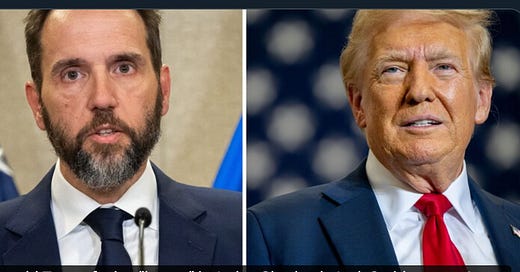What Did The Supreme Court Instruct The Trial Court To Do Regarding POTUS Immunity?
Is the plan by the Court and Special Counsel different from those instructions?
In the newly re-animated criminal case brought by Special Counsel Smith against former President Trump in the District of Columbia, the District Judge issued a scheduling order two weeks back that directed the SC’s Office to file its proposed “Opening Brief” on the issue of Presidential Immunity on or before September 26, 2024. So, this past Thursday the SC’s Office filed a brief that is approximately 180 pages long, along with four volumes of exhibits which are source documents for the references to evidence and testimony that is set forth in the 180 page Brief. I’ve not seen any information reported as to how many pages are in the four volumes of exhibits, but my guess would be that the total is over 1000 pages.
As I noted in an article last week, much of this material is going to be covered under the terms of the Protective Order requested by the Special Counsel’s Office shortly after the initial indictment was returned. That Protective Order provides that certain “Sensitive Materials” provided to the Trump Defense could not be included in filings on the public record. Included in the definition of Sensitive Materials are all Grand Jury materials covered by Rule 6(e), including transcripts of witness testimony, documents obtained via grand jury subpoena, and any exhibits used with the witnesses while they testified.
Also covered are all manner of documents — reports, summaries, notes, etc., — from witness interviews by members of the SC Office, along with any documents shown to the witnesses.
Prior to either party being allowed to file any “Sensitive Materials” in a motion or other filing on the “public docket,” a copy of the motion and any accompanying documents must be filed under seal — but only after an effort has been made to confer with the other side on proposed redactions. The filing party can submit a redacted version of the motion under seal. The opposing party can then file its own version of a redacted motion to be filed on the public docket.
We know that SC Smith filed his motion and exhibits, along with a proposed redacted version, because the District Judge issued and order setting forth certain deadlines for the Trump Defense to respond to the SC’s redacted version, and submit further redactions it would propose.
Keep reading with a 7-day free trial
Subscribe to Shipwreckedcrew's Port-O-Call to keep reading this post and get 7 days of free access to the full post archives.





